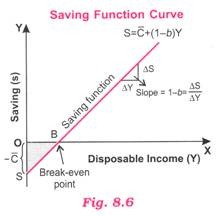

This disruption isn’t here yet-early robo-taxis will cost more (fully burdened) than today’s driver-based ride-hailing services-but we expect the difference between the two to disappear quickly (Exhibit 2). Such actions could encourage users to switch to shared autonomous-mobility modes. New regulations that ban private single-rider vehicles from city centers or the imposition of congestion charges might make private cars less attractive and more expensive. Furthermore, regulations will play a key role in shaping future mobility outcomes. In addition to price, greater convenience could drive consumer acceptance of robi-taxis, along with the perception of safety if AV performance continues to improve.

Moreover, depending on the context, the cost per mile for a personal (not pooled) robo-taxi trip could amount to just 40 to 50 percent of a driver-based ride-hailing trip. Robo-shuttles could be 10 to 40 percent cheaper than private nonautonomous cars, though less convenient. We estimate that the cost per mile of a robo-taxi trip could be just 20 percent higher than that of a private nonautonomous car in certain contexts, depending on use case, geography, and local conditions such as city archetype (for example, large and sprawling versus dense). Please email us at: fully burdened costs for such services are very high today, they could decline significantly in the coming decade. If you would like information about this content we will be happy to work with you.

We strive to provide individuals with disabilities equal access to our website. Despite their additional technology costs, robo-taxis could become price competitive with private nonautonomous cars and even transit services (Exhibit 1). While fully burdened costs for such services are very high today-because of the high cost of technology, development, and operations-they could decline significantly in the coming decade as AV technology advances and smarter, more seamless, multimodal mobility ecosystems emerge. Customer preference strongly depends on how the cost of these AV services compares with other mobility modes. The adoption of robo-taxis and robo-shuttles depends on four main drivers: regulations, technology readiness, business-case attractiveness, and customer preference. Poised for disruption: Cost per mile for mobility in 2030 Finally, we discuss implications of our findings for various industry players, including OEMs, tier-one suppliers, cities, AV technology players, and mobility-services operators. Our analysis suggests that unlike in traditional mobility, shared AV services will develop new rules for mobility in which operational and service-provisioning costs will play a pivotal role. We highlight the potential of such services to make mobility cheaper for consumers and discuss key cost drivers, including local contexts and use cases. This article focuses on shared AV services such as robo-taxis and robo-shuttles, which are on-demand taxi services using autonomous vehicles without a human driver, with a 2 to 6 occupant capacity for the former and a 4 to 10 occupant capacity for the latter.

In L4 systems, the autonomous system can perform dynamic driving tasks.
#Autonomous consumption driver
元 refers to conditional automation, in which the system controls steering and acceleration while also monitoring the driving environment, but the system requires a human driver to perform certain dynamic driving tasks. In a previous article, we discussed advanced driver-assistance systems (ADAS) and Level 3 (元) and Level 4 (L4) autonomous-driving systems for highways in private car ownership.


 0 kommentar(er)
0 kommentar(er)
